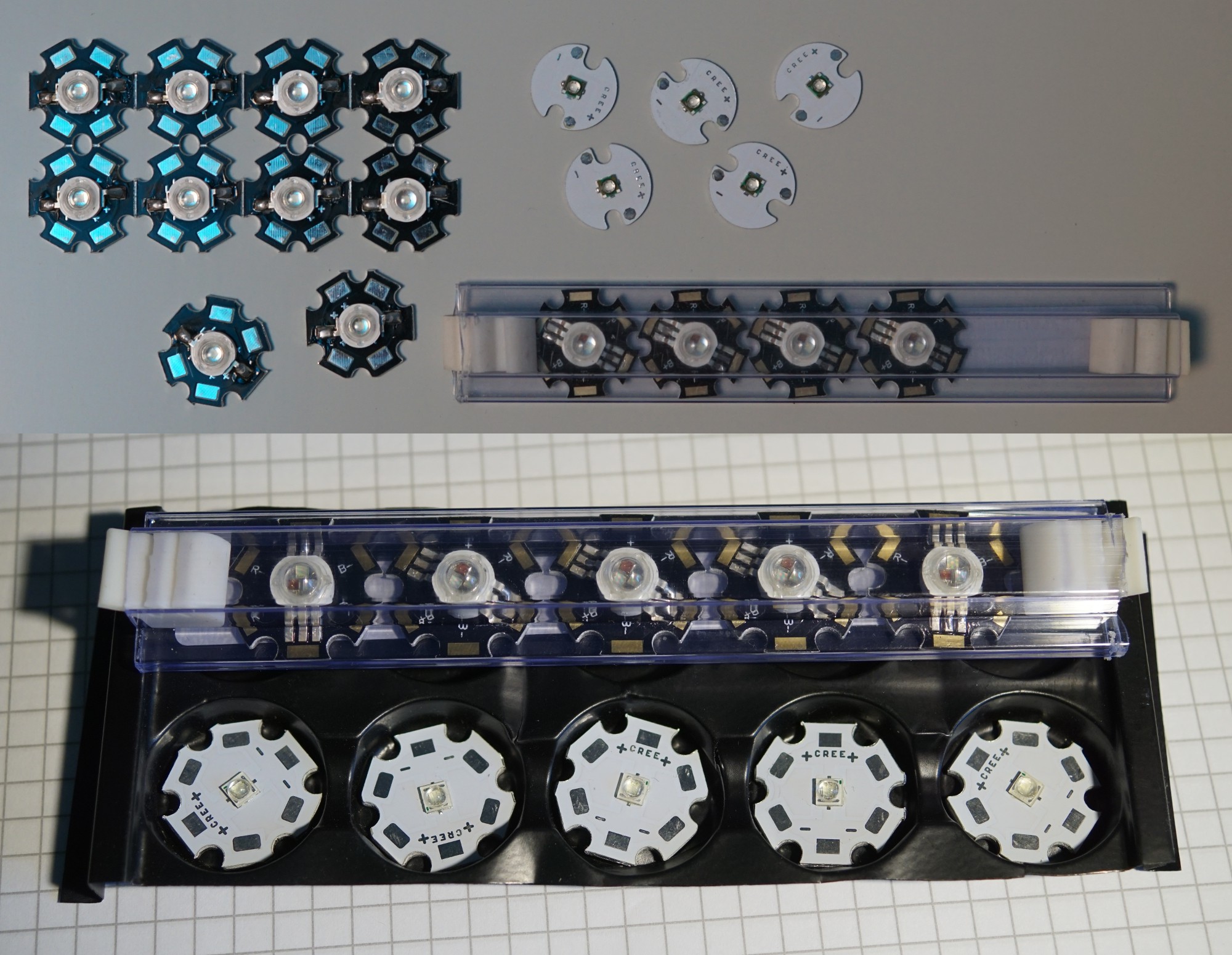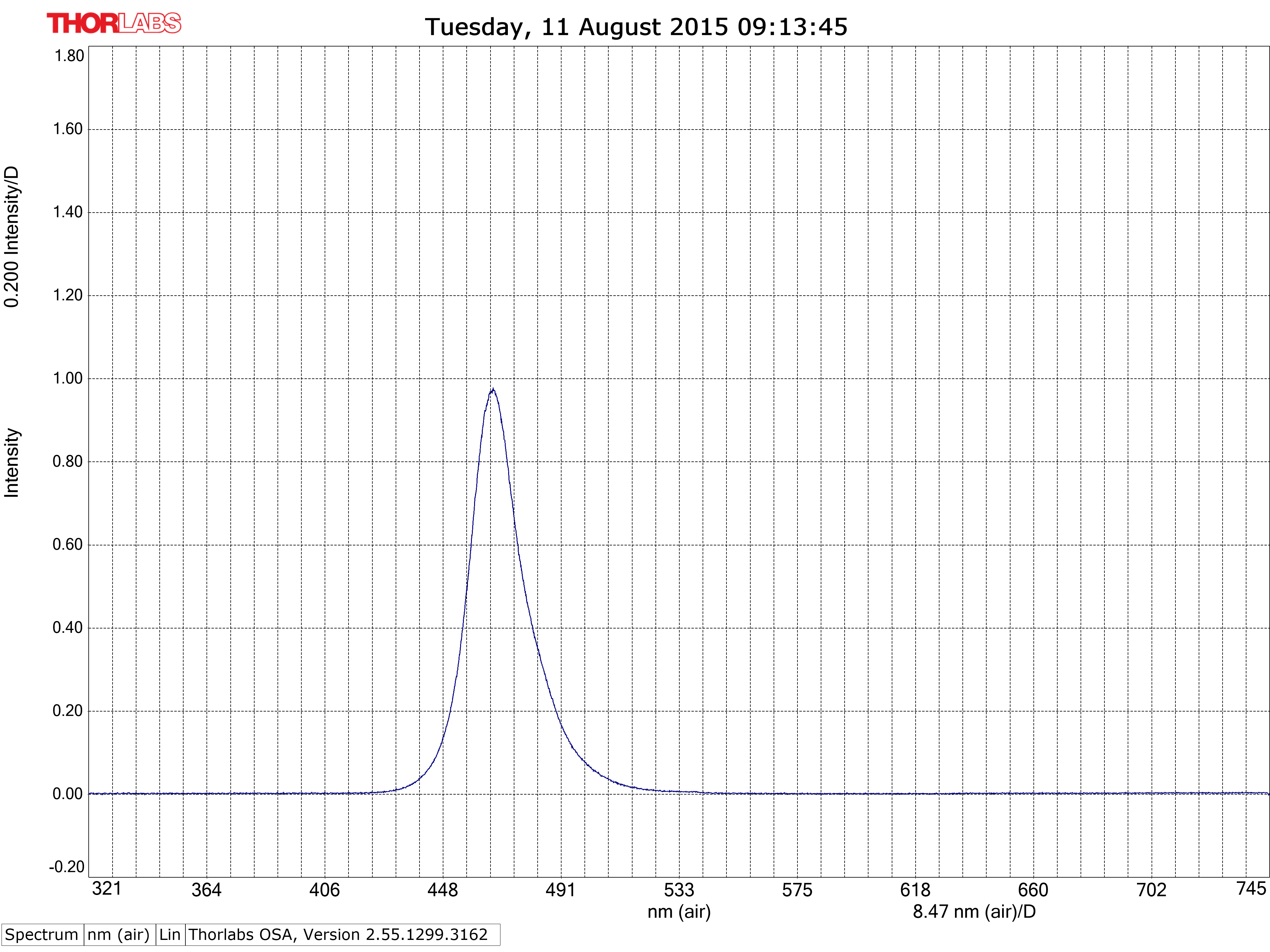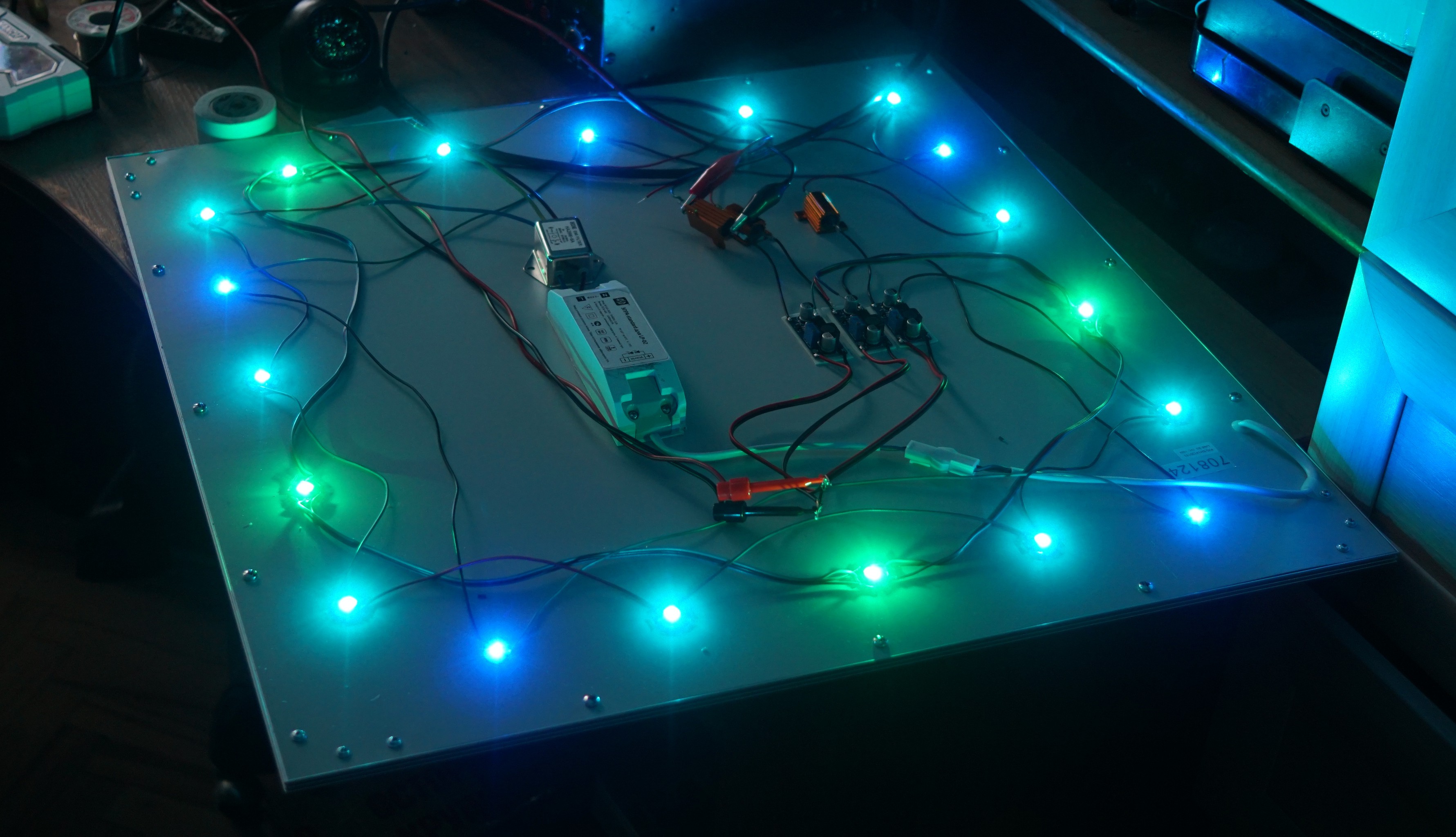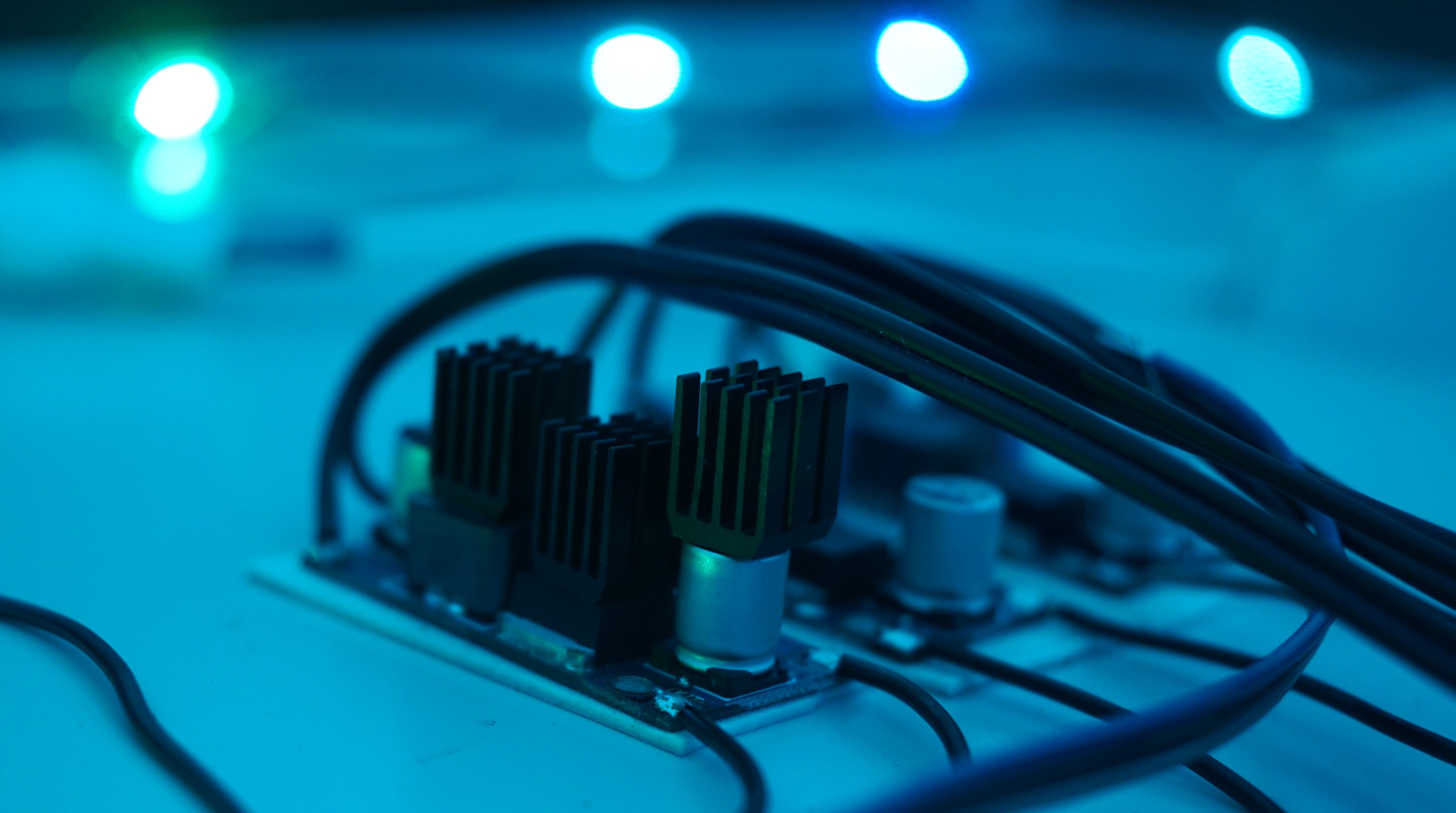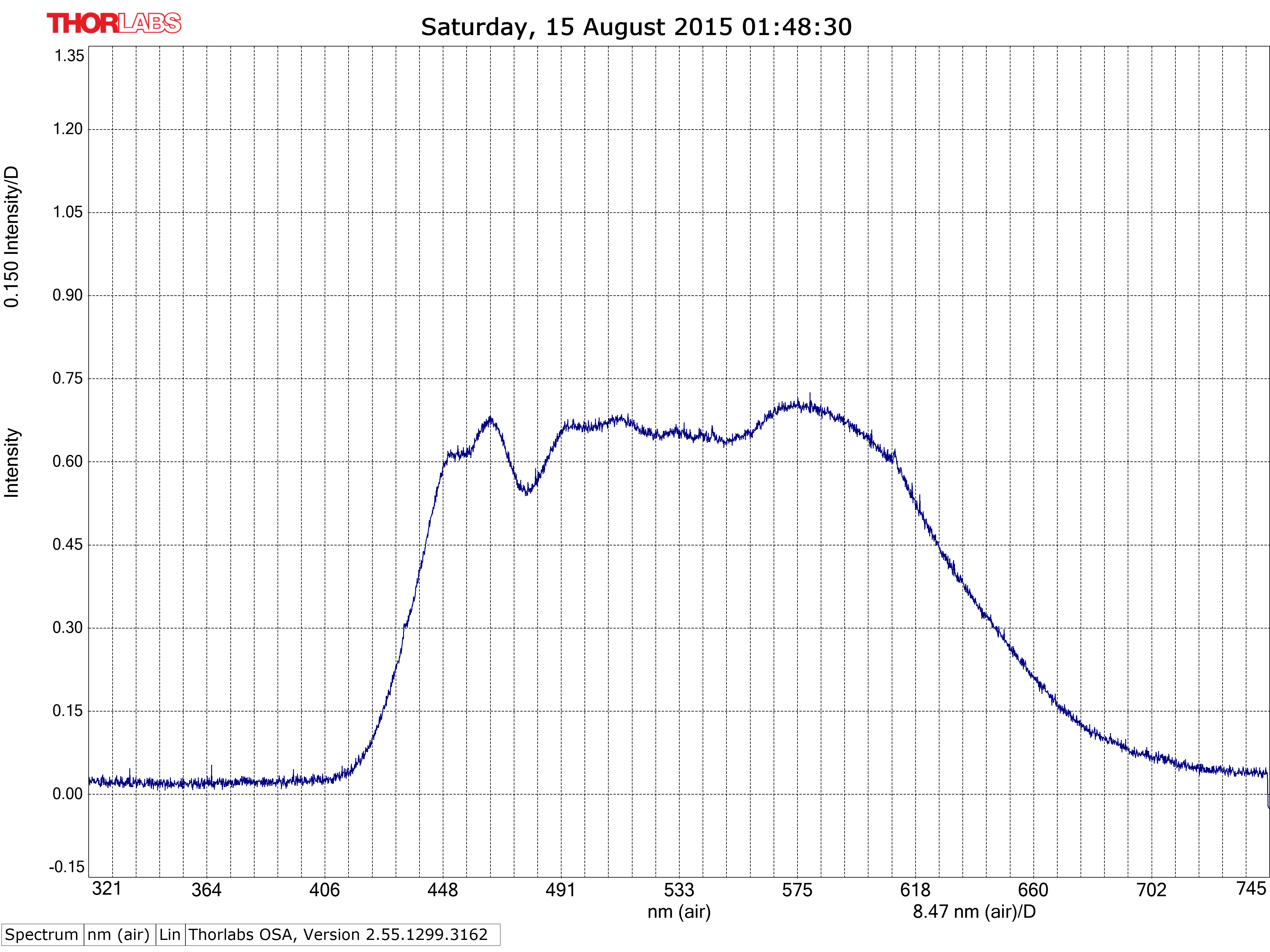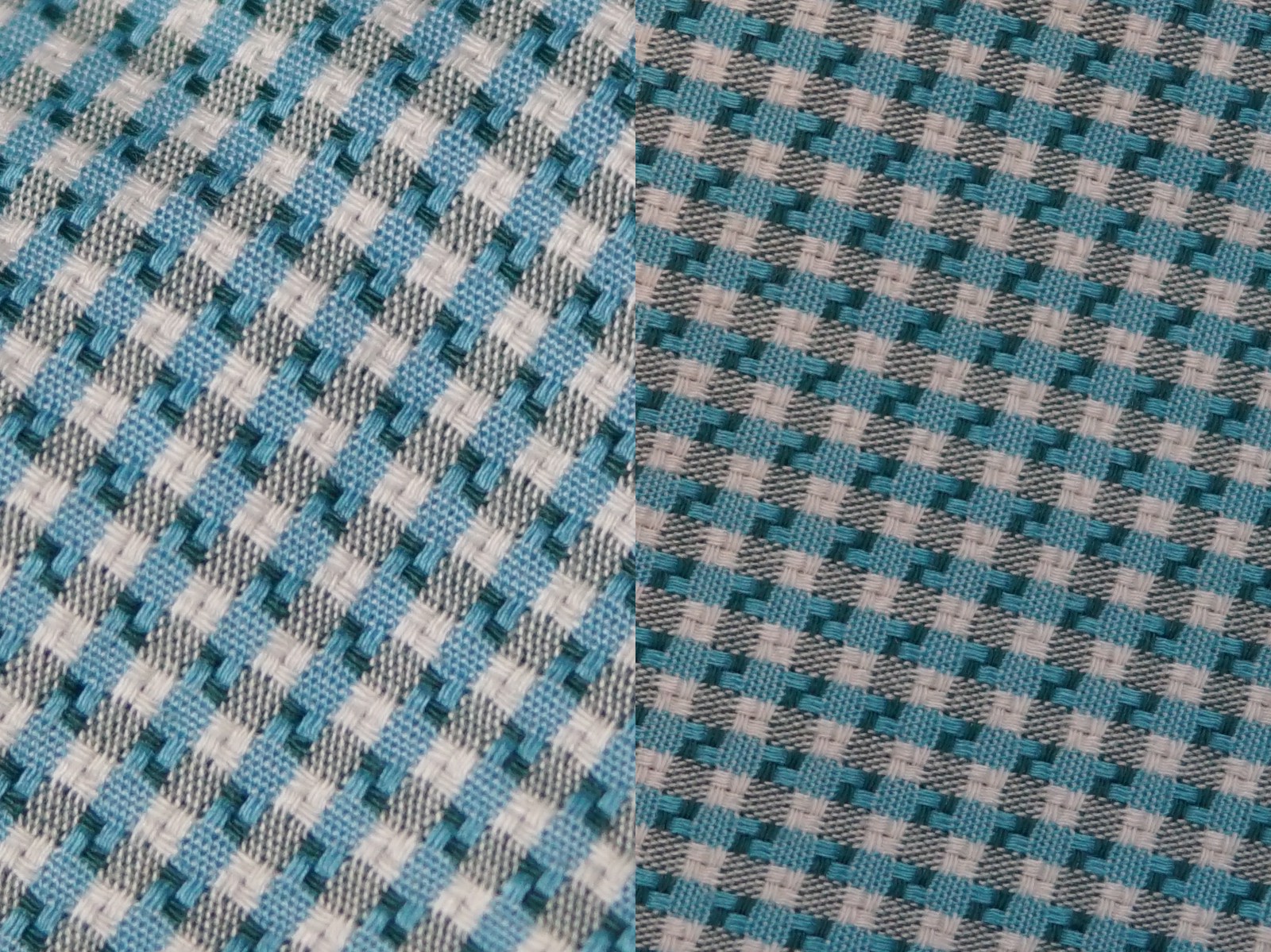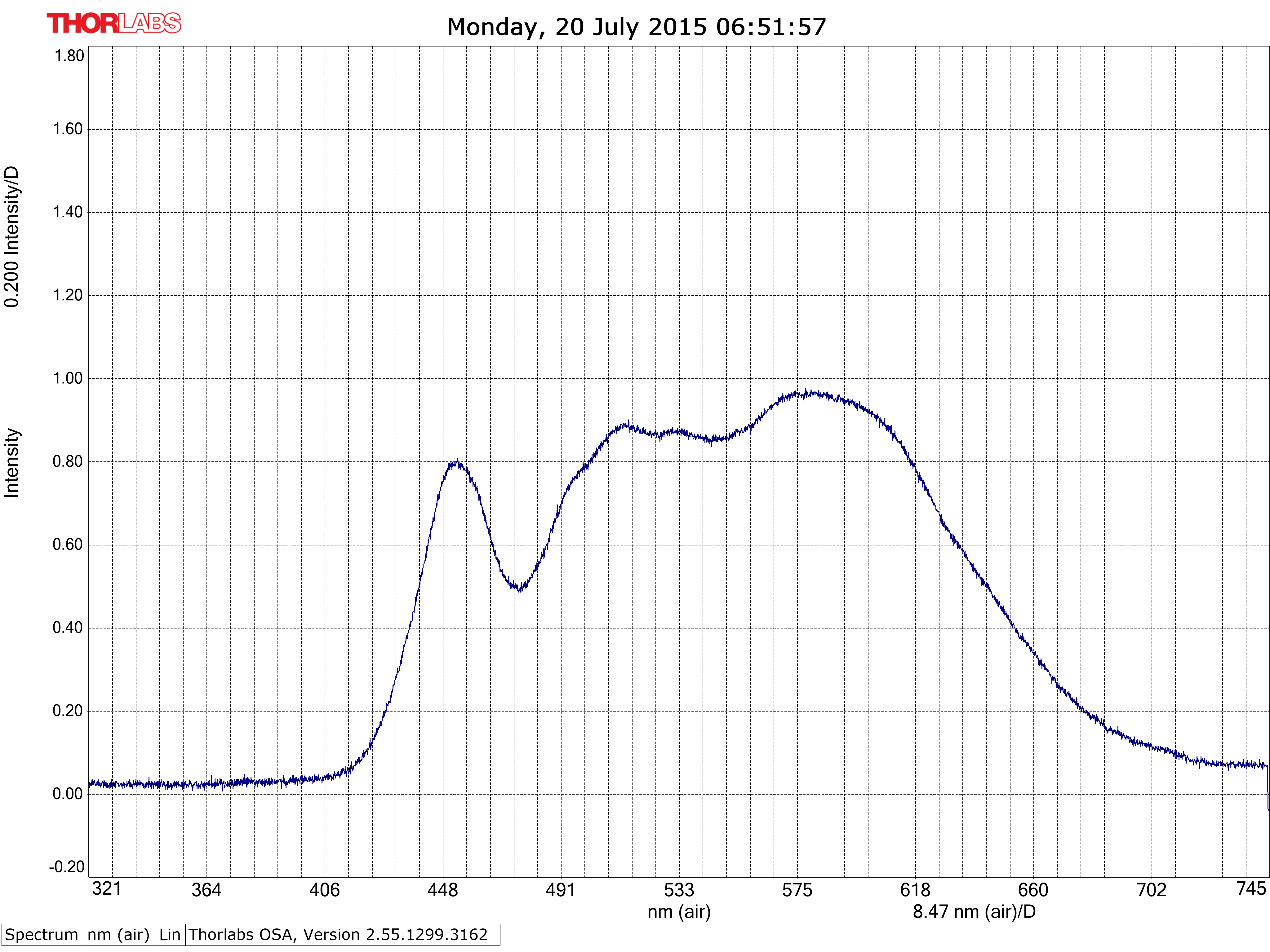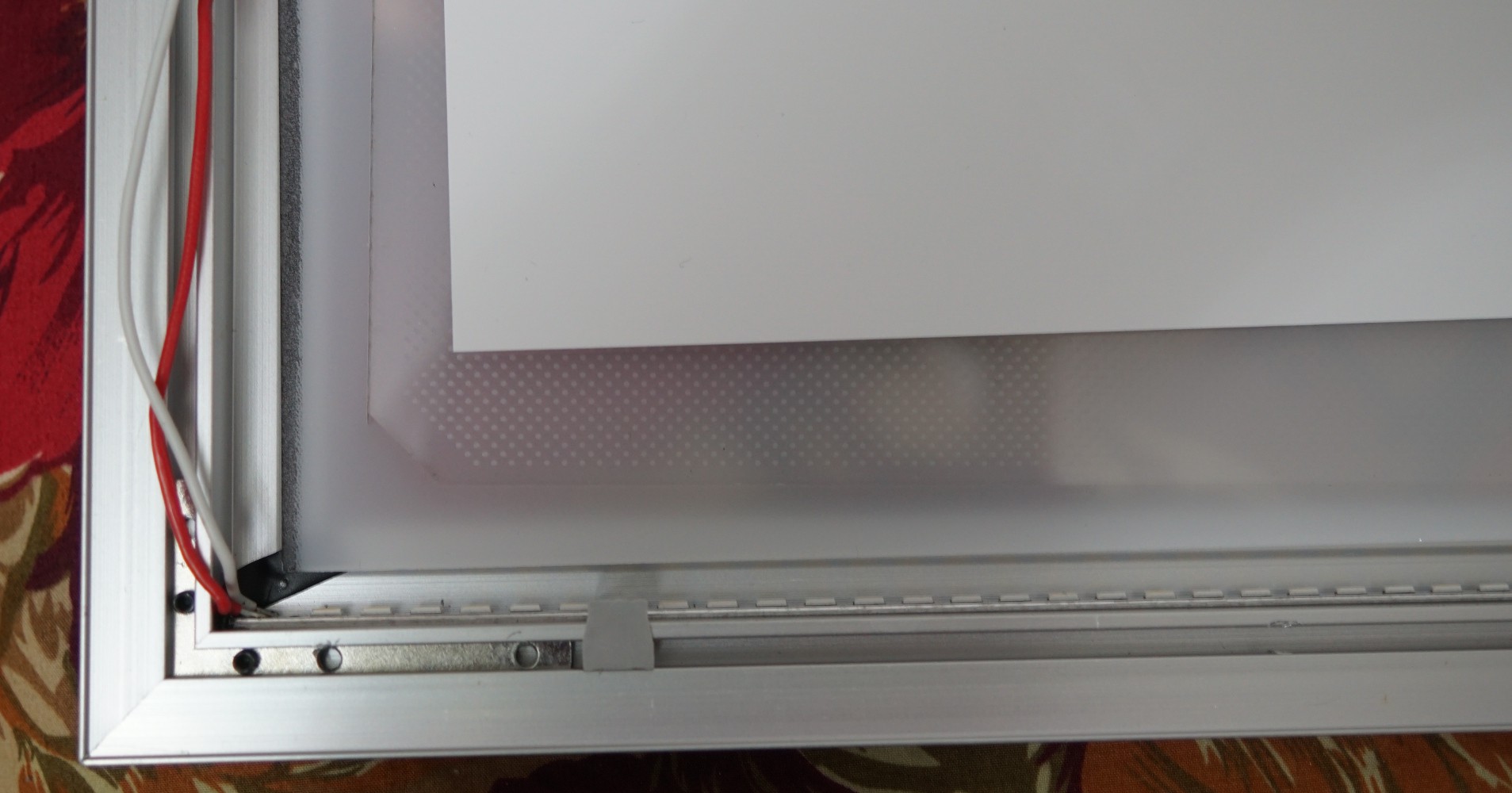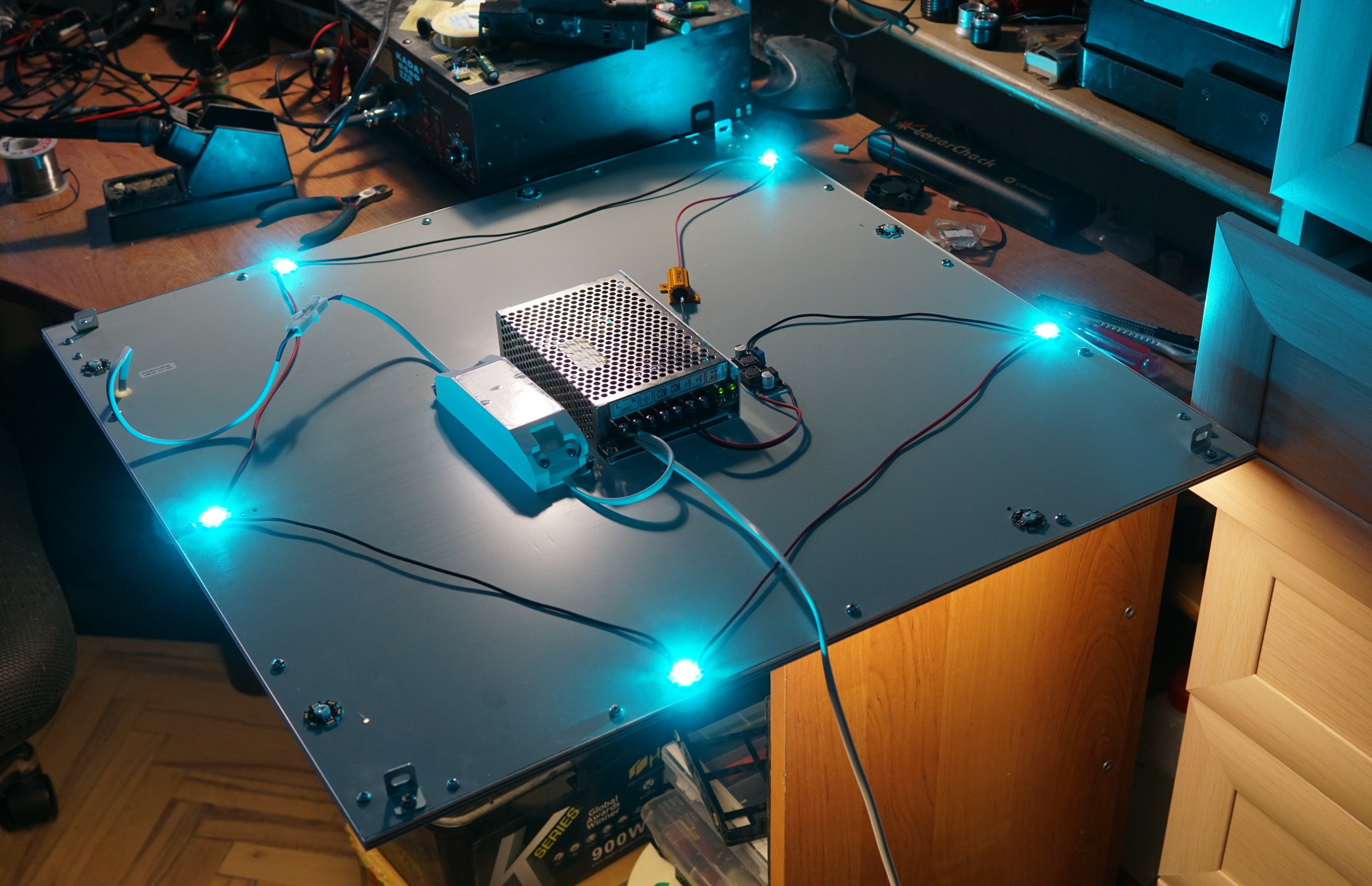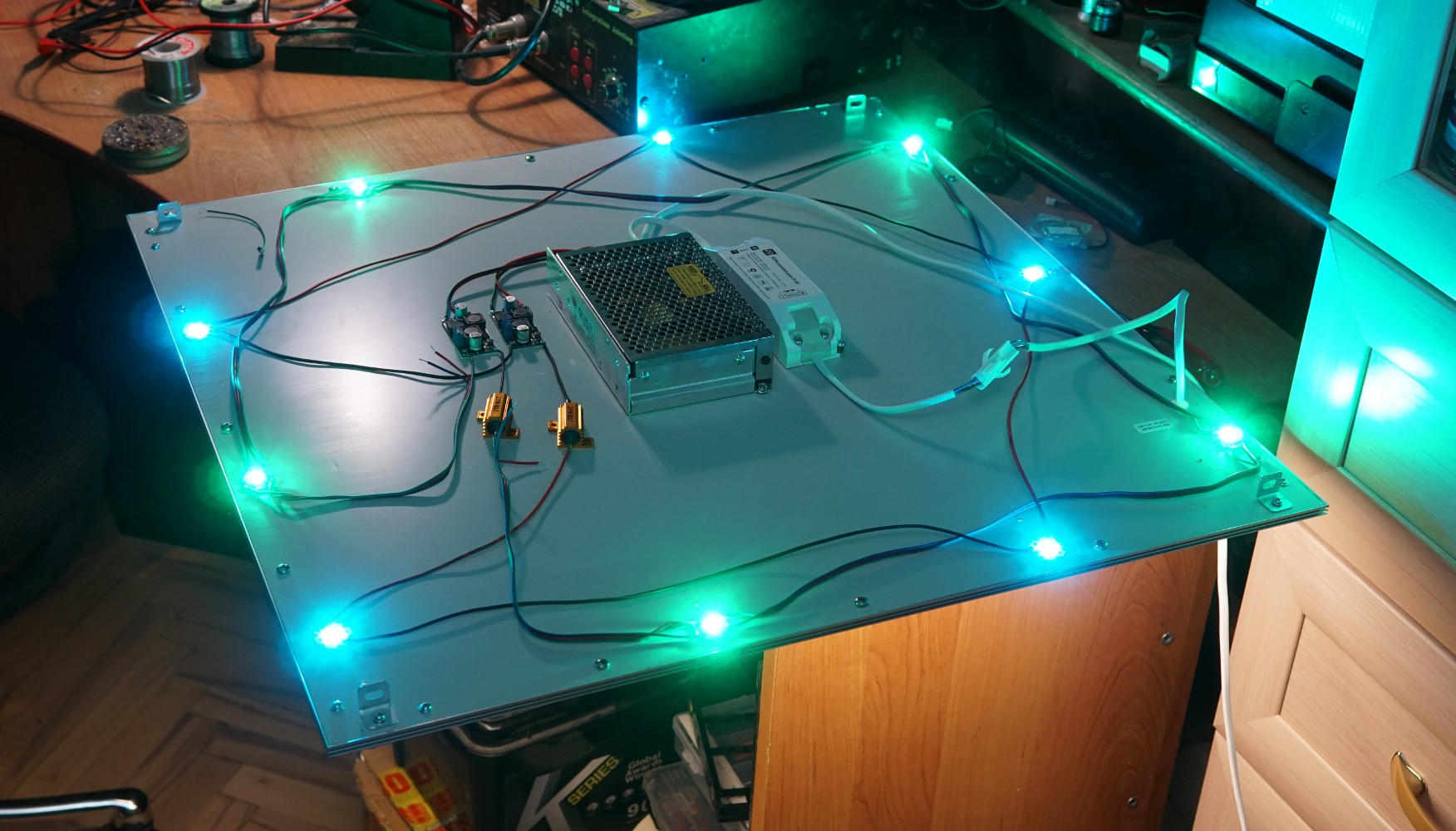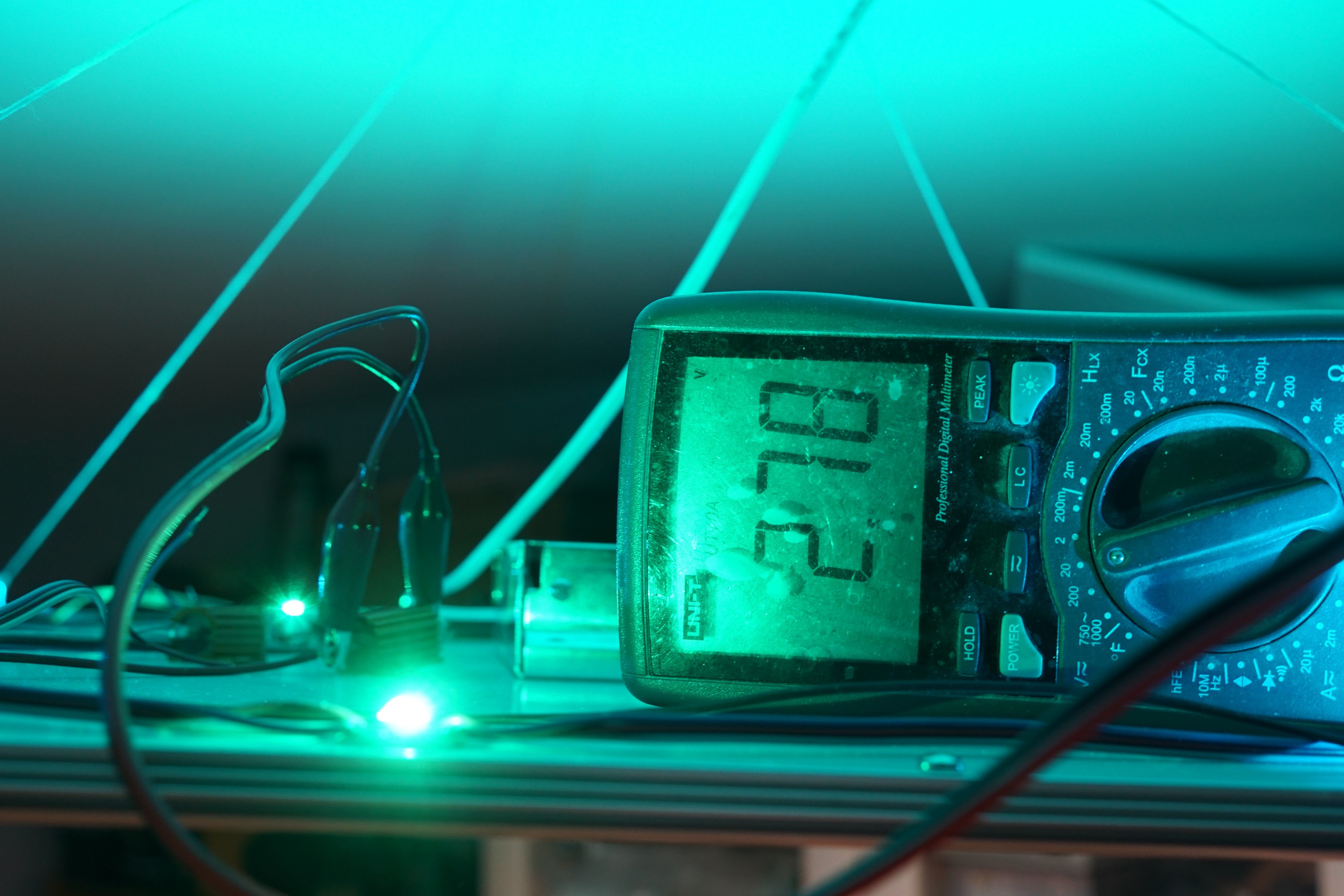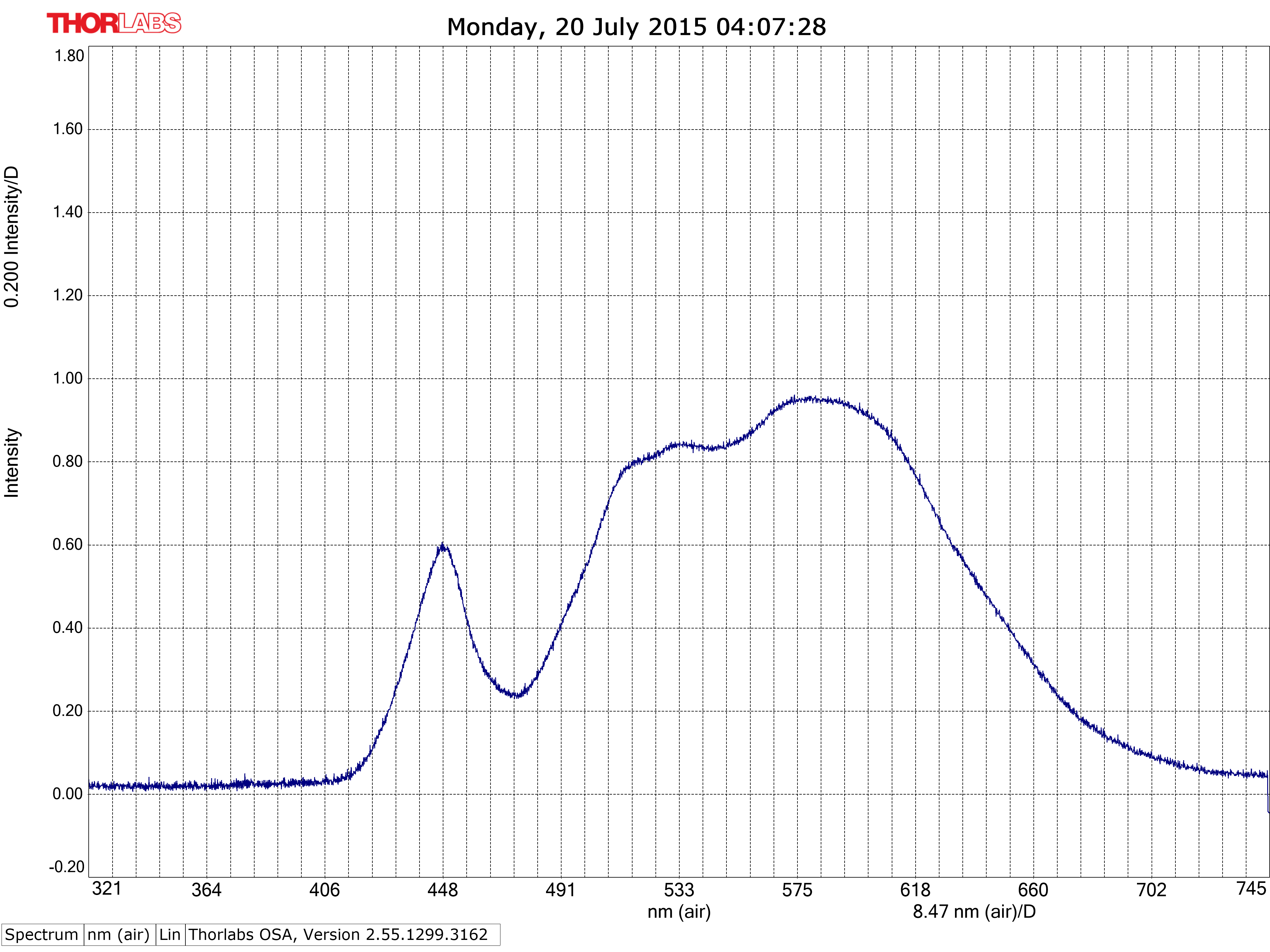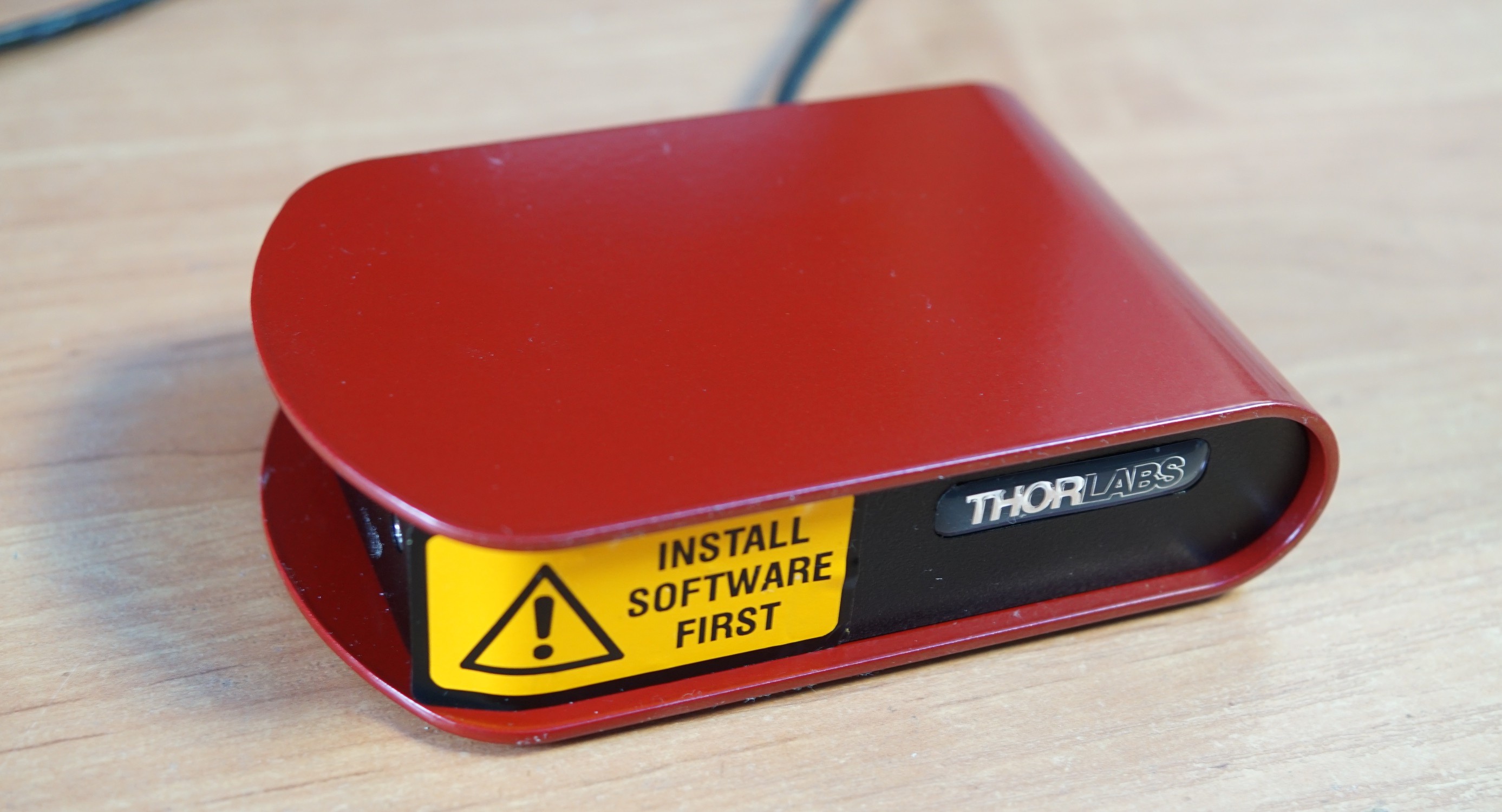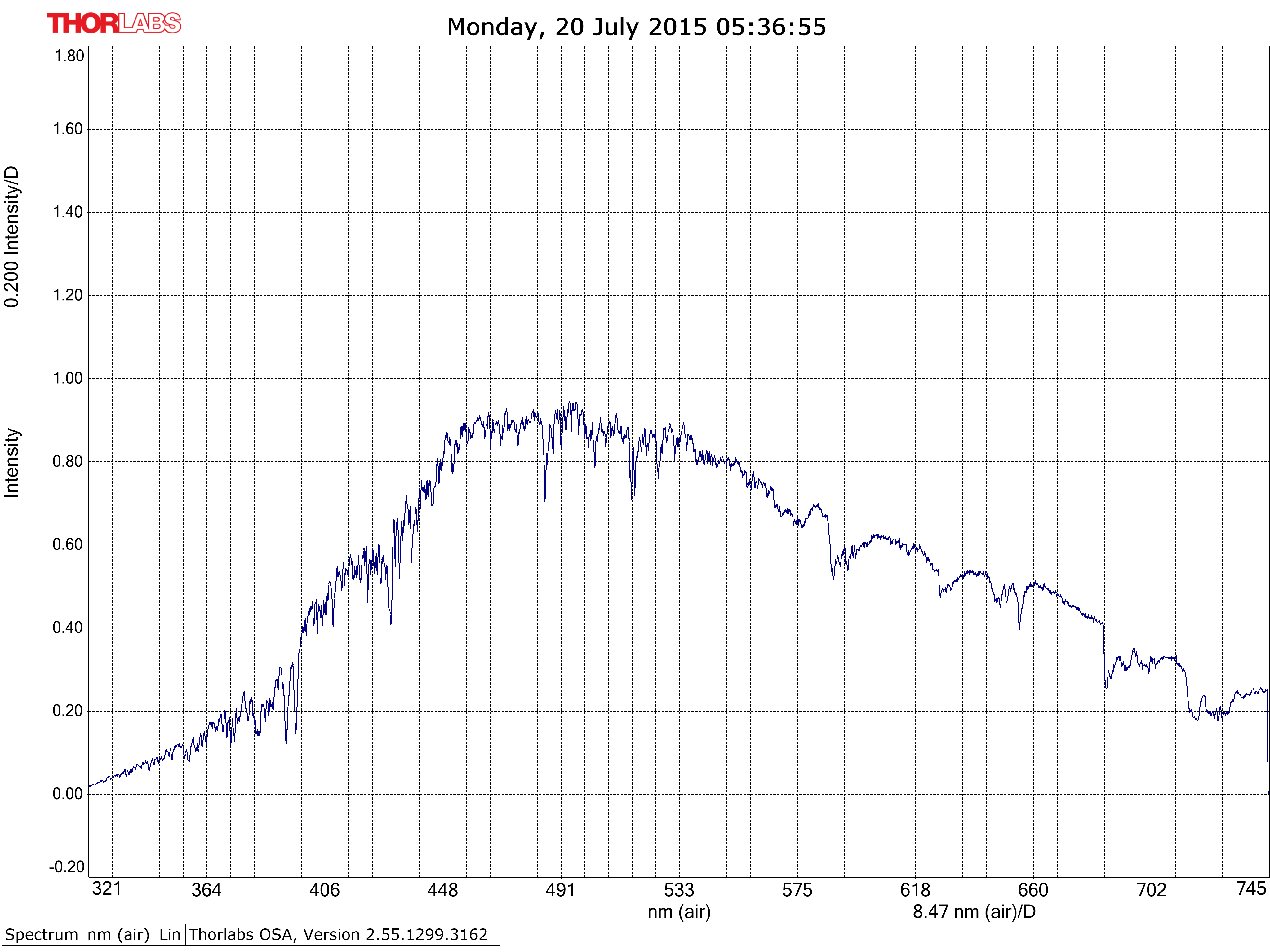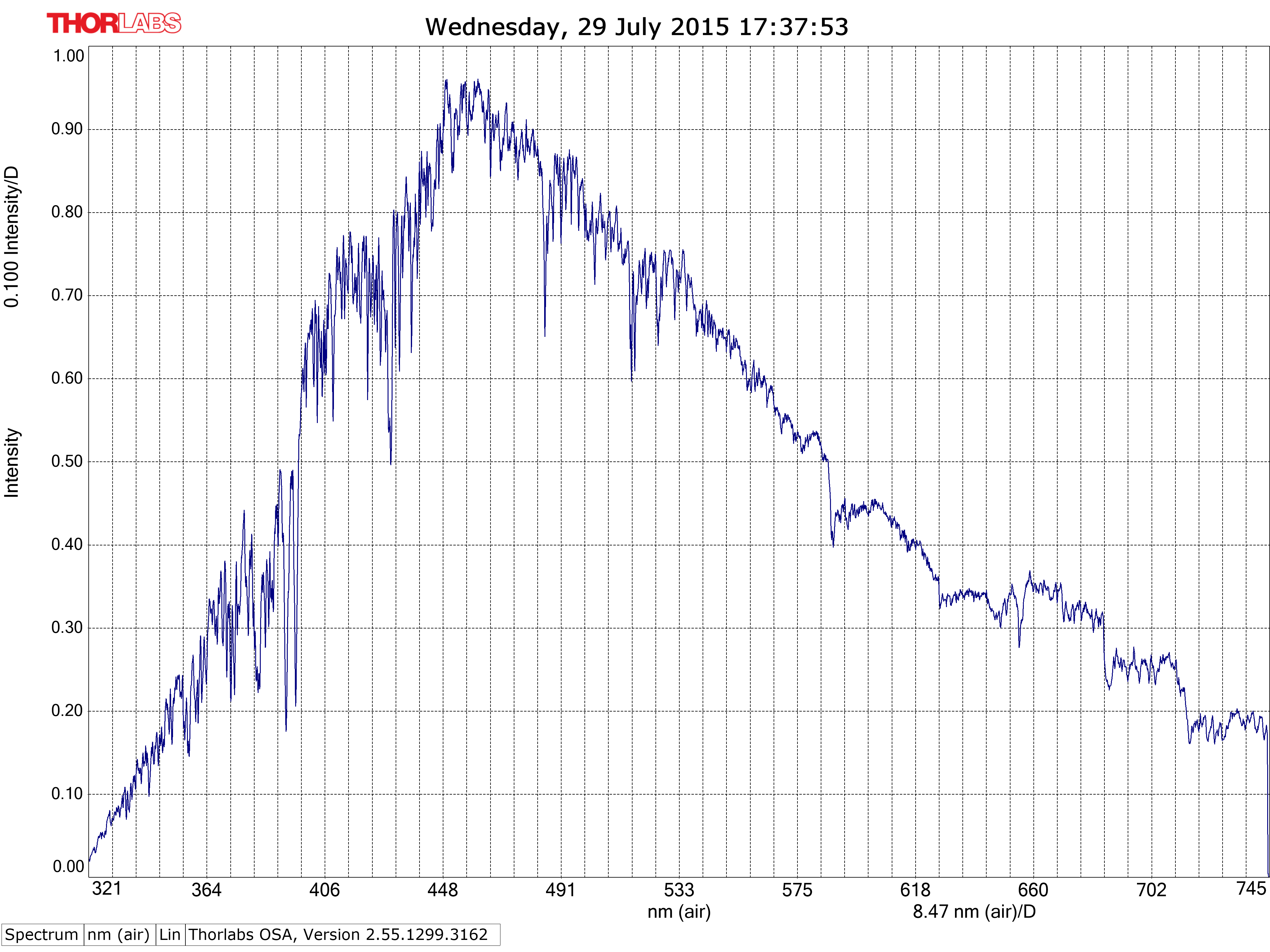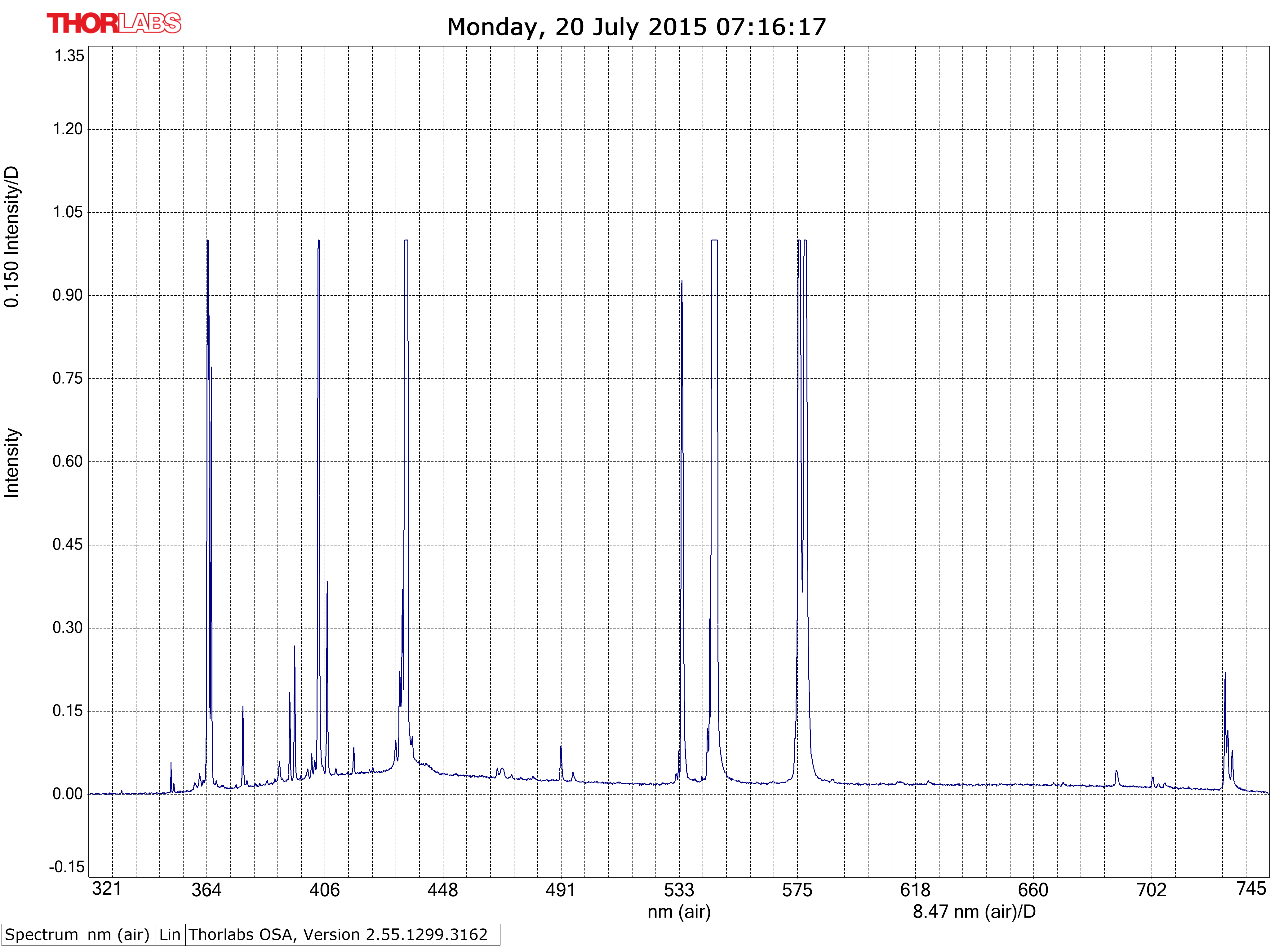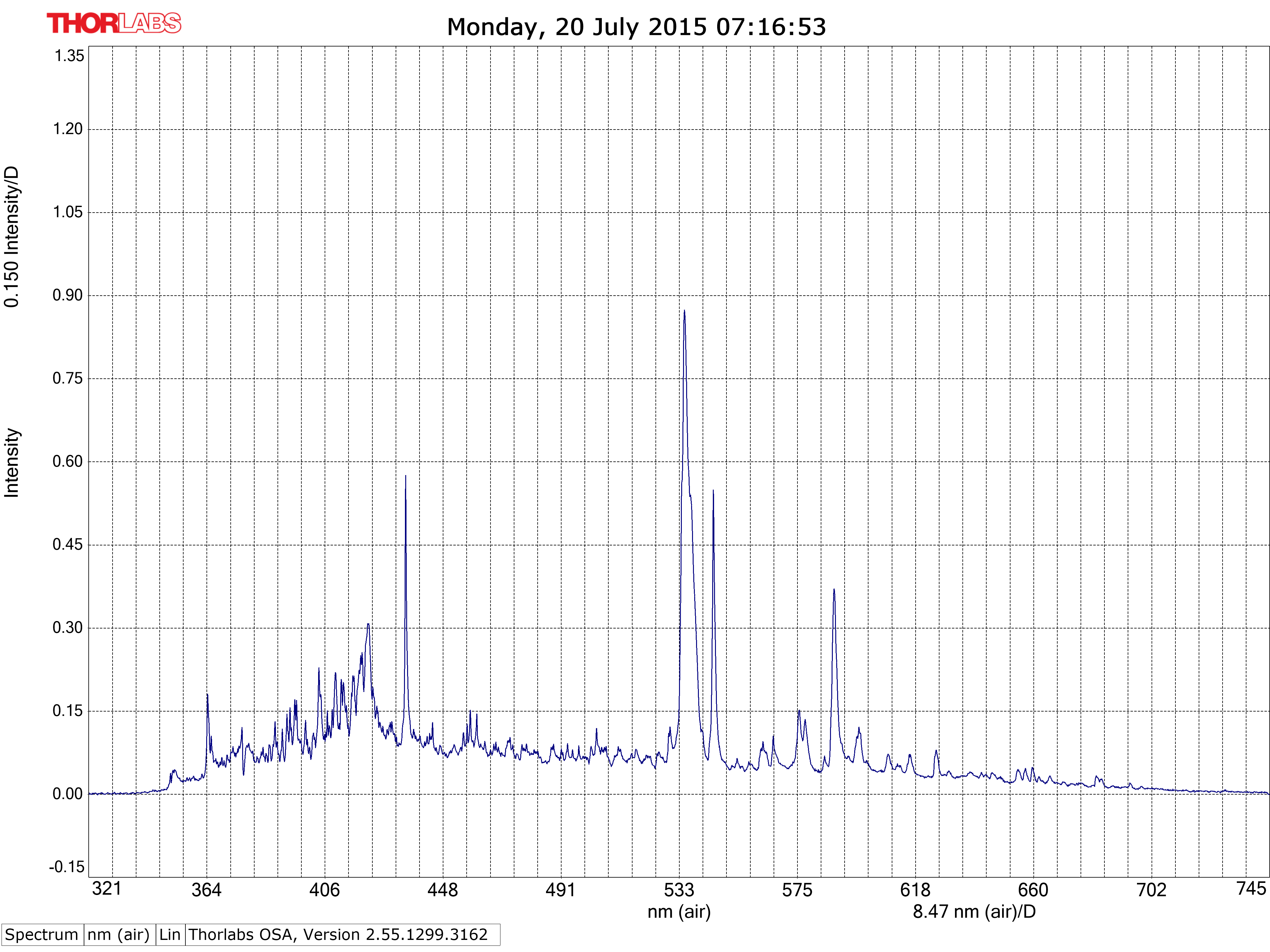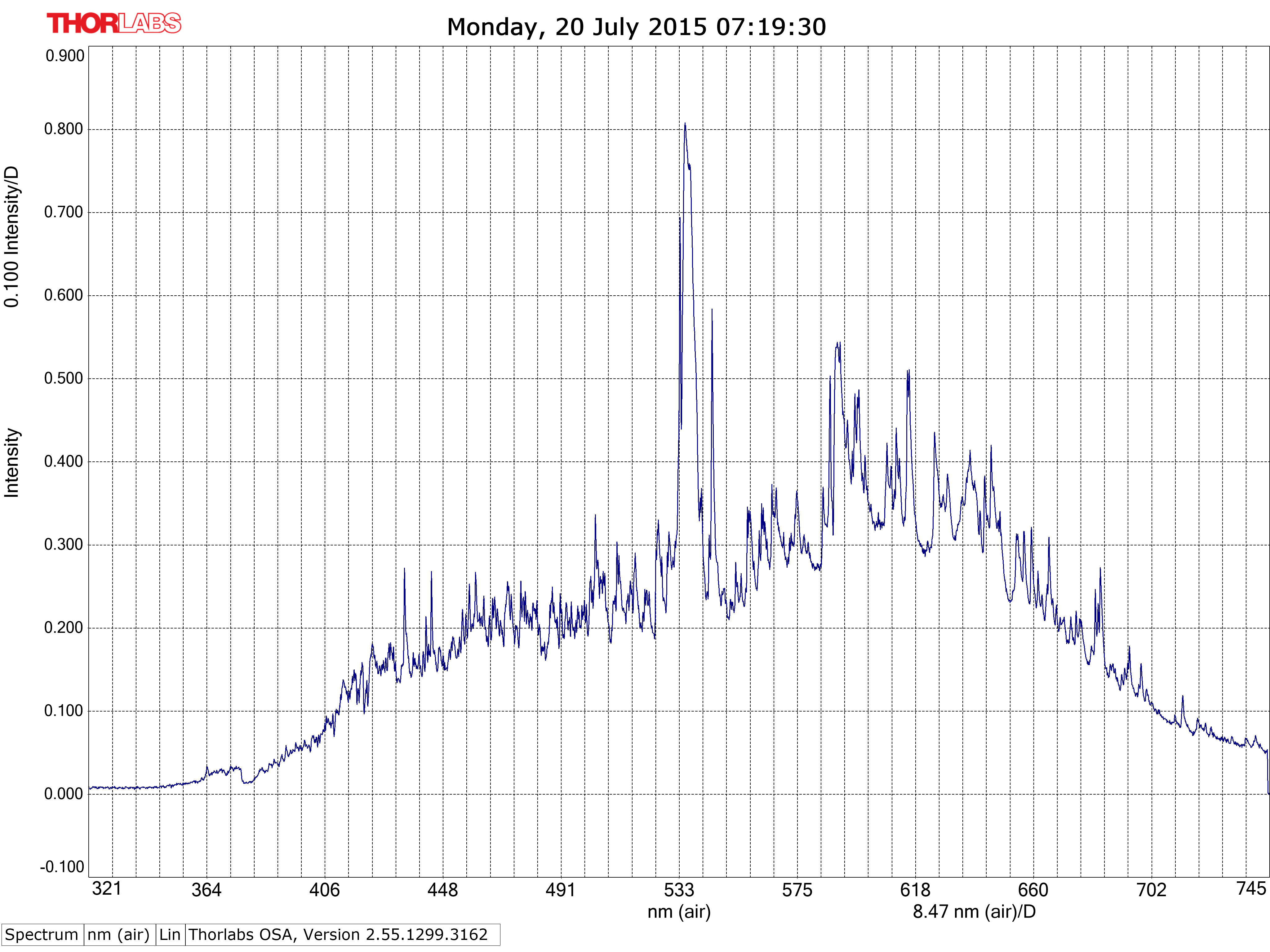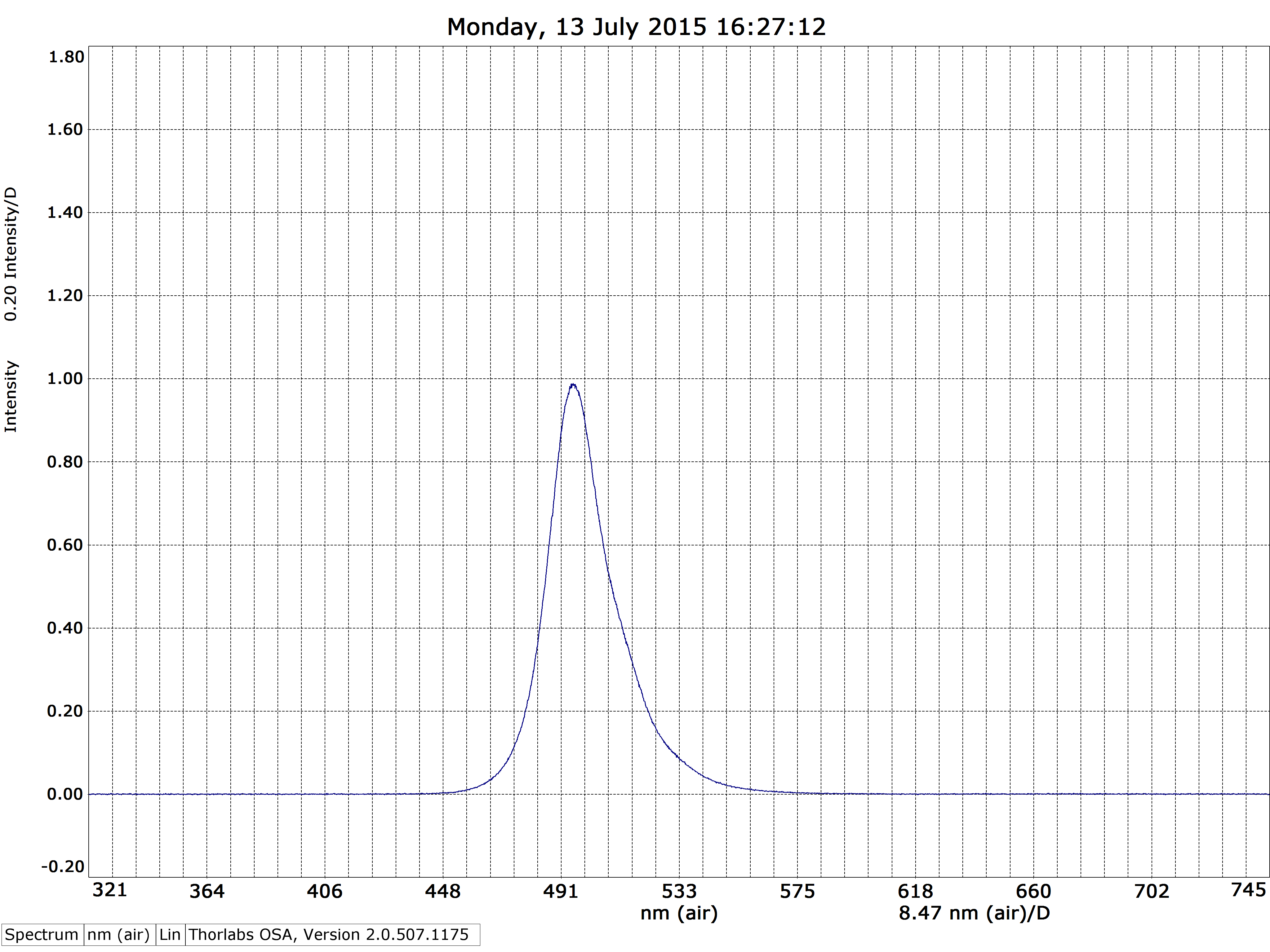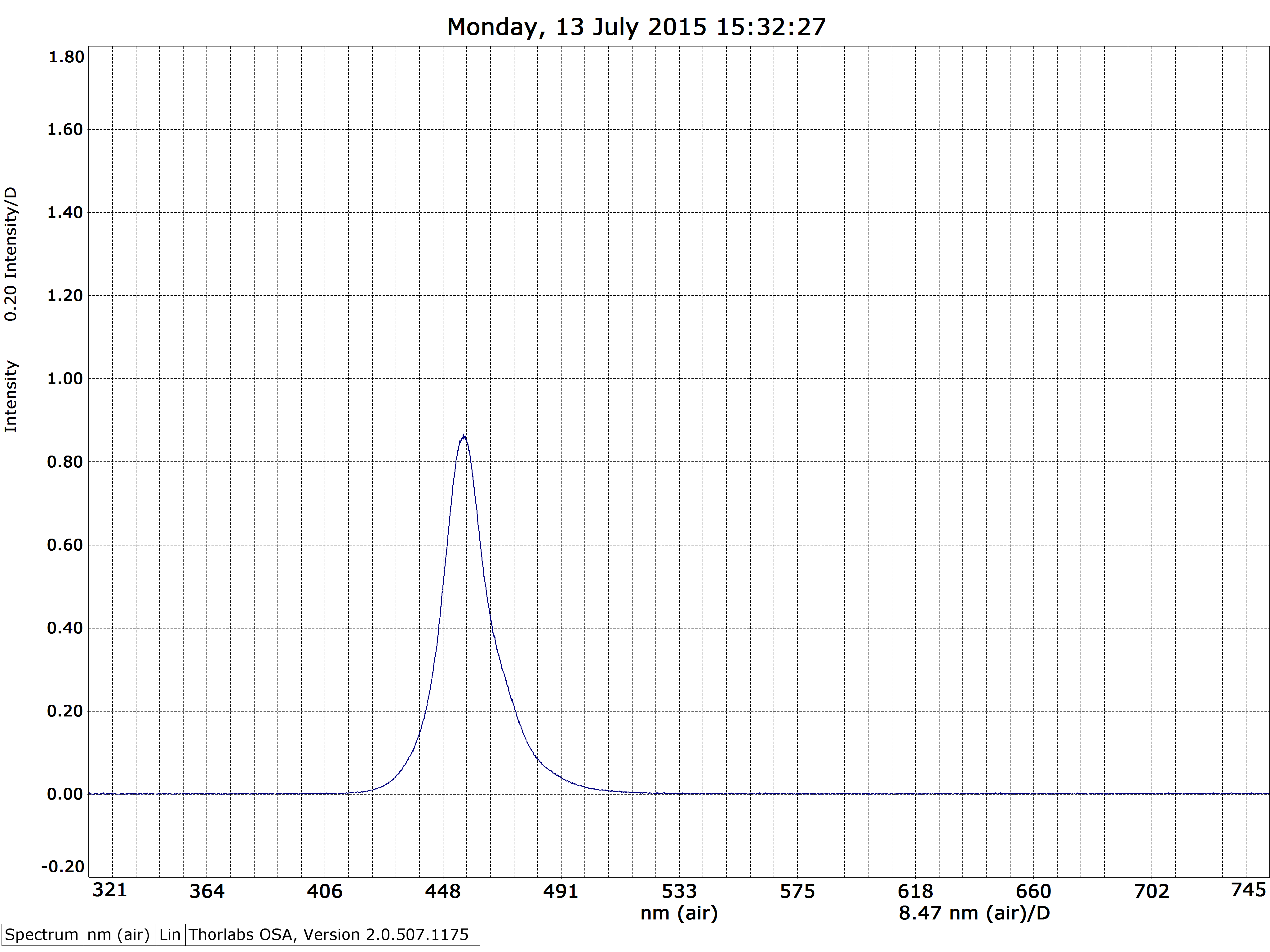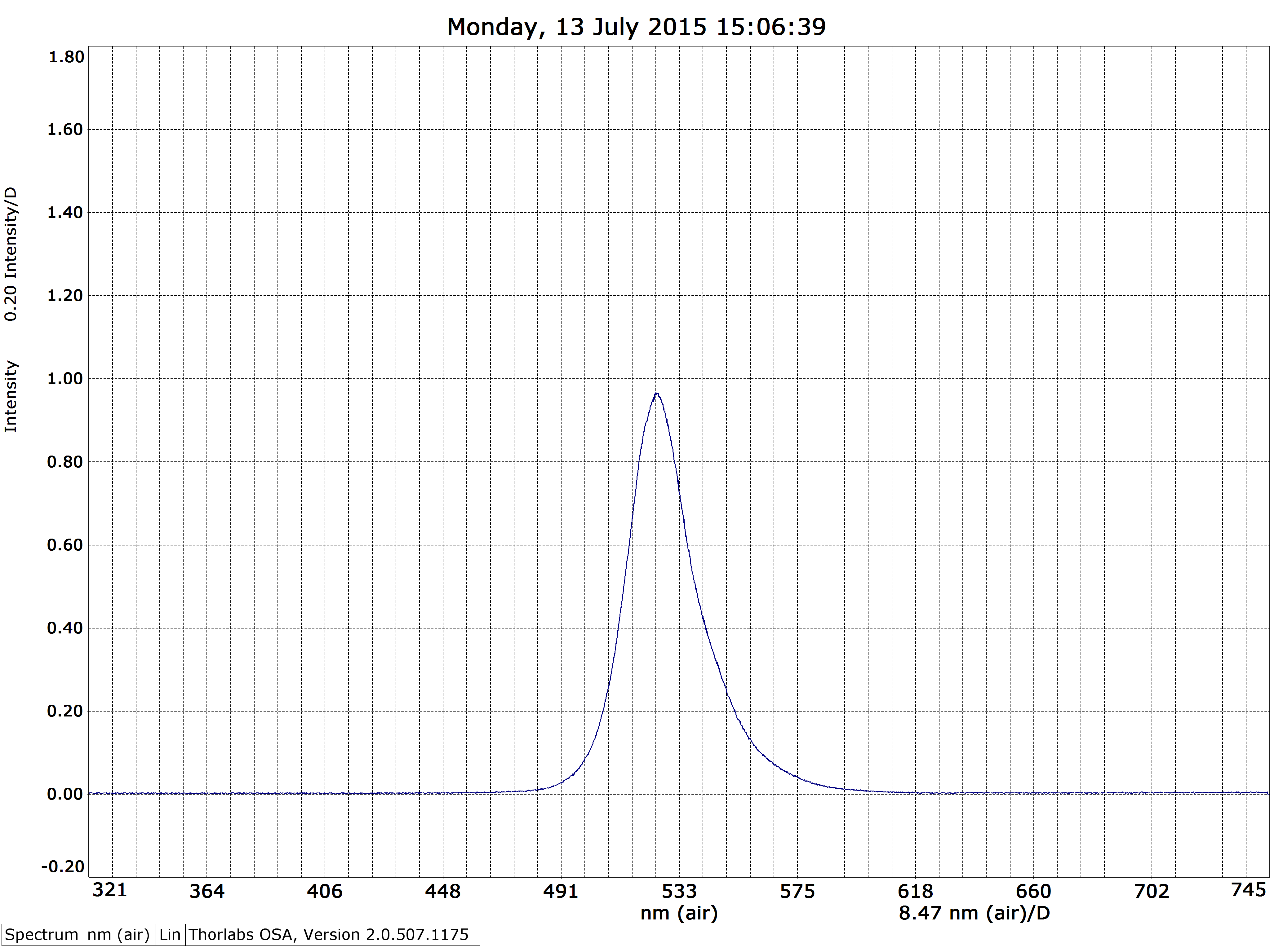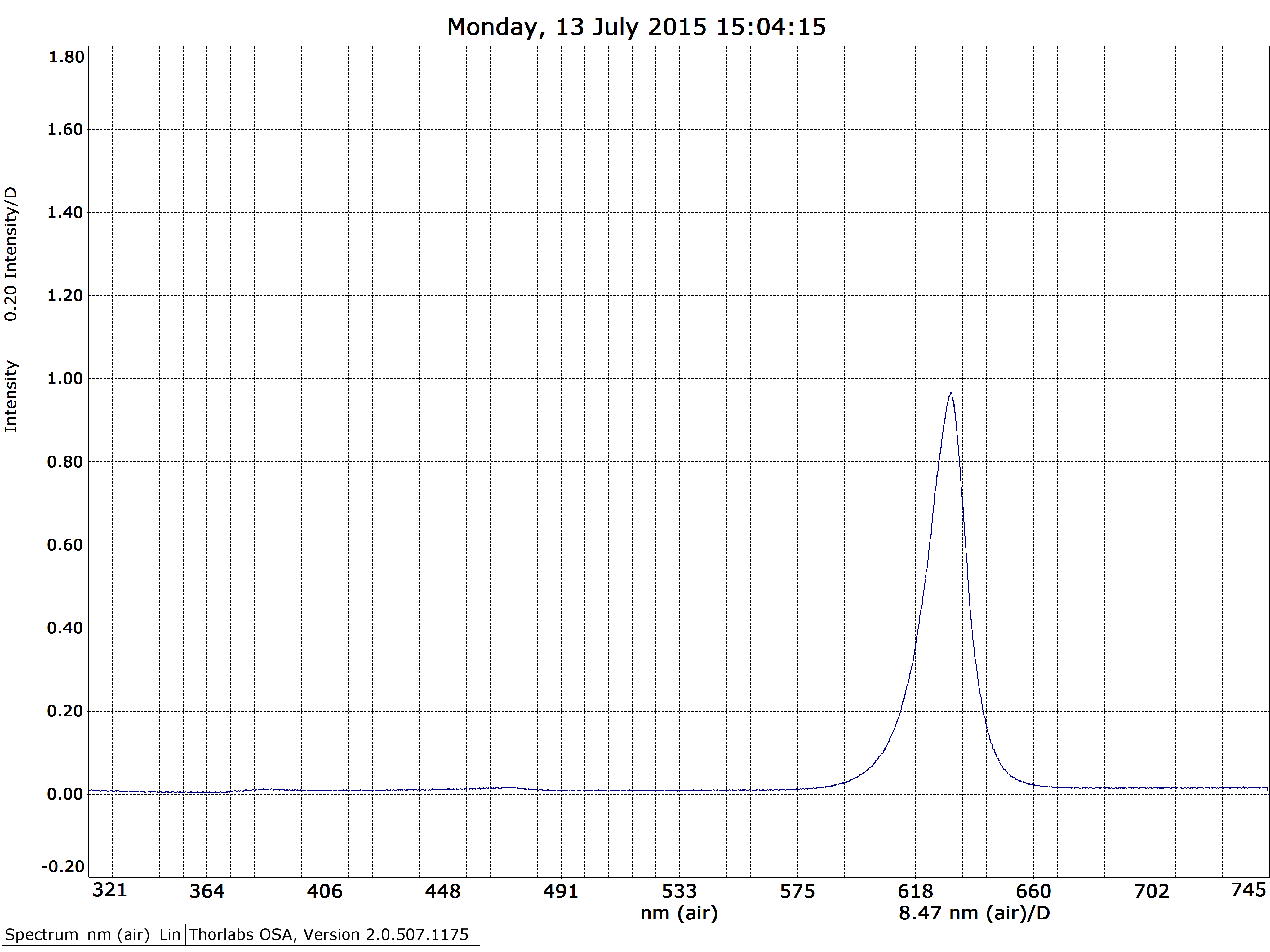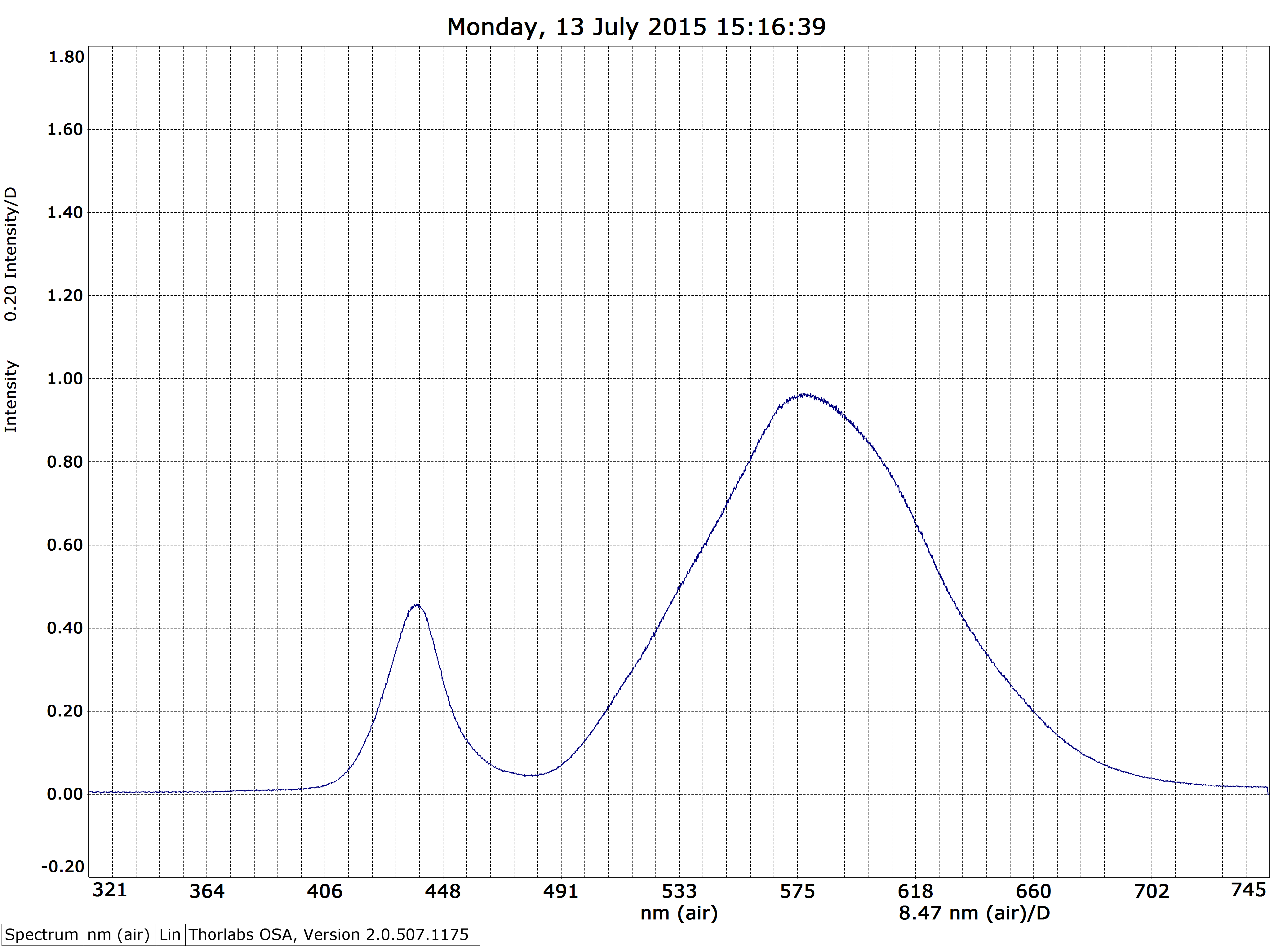-
New LEDs arrived!
08/17/2015 at 20:43 • 0 commentsWith new 490nm and 470nm LEDs I can finally proceed:
![]()
470nm LED came close to specs:
![]()
![]()
With 10x0.7A for Cyan LEDs step-up regulator is taking too much heat, so I had to add few extra radiators:
![]()
After fine-tuning current in the LED chains I've got the final spectra:
![]()
Finally there are no missing colors - this is something which could satisfy me. And "blue sky" effect is really nice. As we were mostly adding LEDs near to eye (and camera) maximum sensitivity, light feels much brighter than before (as well as photo exposures).
Is there a visible difference? Yes, but not looking at spectrum analyzer it is hard to show you on the RGB display with RGB camera. I have cyan shirt for example, and it's color is visibly different under new lighting - but making and comparing a photo won't show much - camera renders it bluish, while in reality it is slightly greenish (regular LED on the left, corrected LED on the right) :
Personally, I am more than satisfied by light itself and I like it much more than my older 100k lumen HID fixture.![]()
Future plans:
This is not the end of the journey though - I ought to replace step-up converters with ballast resistors with a proper constant current ones and make it RF-controlled (nRF24LE01). I am going for nRF instead of hiped WiFi ESP8266 because I personally cannot tolerate wakeup latency.
Instead of using standalone constant-current ICs I am going to drive mosfets from uC PWM pins while monitoring current. As there are no fast current changes this should do the job with very simple schematic.
-
MOAR LEDs!
08/17/2015 at 20:24 • 0 commentsSo I needed to add more LEDs. Apparently just 5x cyan LEDs cannot cover the hole left by 40W white ones, so I used all 10 cyan I had on first fixture (initially I planned to use 5 on each), and set them to maximum rated current (700mA), tuned 460nm blue die form RGB LEDs to get as flat as possible, and the best I got was this:
![]()
Much better than original white LEDs, but there is still a hole near 470nm, not as terrible as before though. It was clear this is as good as one can get with LEDs I had. If I increase current on any of them - I'll get overshoot. So I needed 470nm blue LED instead of 460nm one to fill in that hole. I ordered LEDs and started to wait...
-
Base LED fixture
08/17/2015 at 20:13 • 0 commentsI really liked simple geometrical forms, so I got square 40W 4000K LED fixtures. They were relatively inexpensive (~40$ each), their large area ensures decent cooling and long life. I disassembled one to figure out if it's possible to stick LEDs inside - but there is just too little space left for high-power LEDs.
Fixture design is quite clever, like on LED display back light: There is acrylic light-guide with diffuse dots across the area to make it uniformly lit. light-guide is lit from the side.
![]()
After fixing minor issues (like black marker marking on the edge,tighter assembly to improve thermal resistance) I assembled it back. It was clear I can only add LED on the back, facing to the ceiling. That might be interesting effect though. I glued first LEDs using ALSIL-5 glue and generic "heatsink plaster".
For first revision I decided to use step-up regulators with ballast resistors to control the current over LEDs. I set the current in "hot" state. Surely in the future I will need to replace it with digitally controllable constant current sources.
![]()
First tests shows that with 5x cyan alone spectrum is very far from desired. I needed more LEDs, so I added RGB ones, intending to use green and blue dies.
![]()
Current adjustment near the ceiling feels a bit tricky:
![]()
With green on I've got the following spectra:
There is definitely a progress, but still very far from desired.![]()
-
First spectrums
08/17/2015 at 20:04 • 0 commentsThis all started with a borrowed spectrum analyzer (Thorlabs CCS100, 350-700nm, <1nm resolution). I started measured spectrum of every LED and light source I had around... :
![]()
Daylight spectrum:
![]()
Just blue light from sky (not including Sun) - we can see it is blue-cyan:
![]()
My nuclear light fixture HID lamps were quite funny. Right after turn on - lots of mercury lines:
![]()
Heating up...
![]()
And it's done:
![]()
Cyan LED:
![]()
Blue 460nm (from RGB):
![]()
Green 520nm (from RGB):
![]()
Red (from RGB):
![]()
And finally white LED:
![]()
Blue Sky + Corrected spectrum White LED fixture
Fixing terrible spectrum (missing cyan&green) of generic white LEDs to get perfect flat spectrum and impression of blue sky in the room.
 Mikhail Svarichevsky
Mikhail Svarichevsky